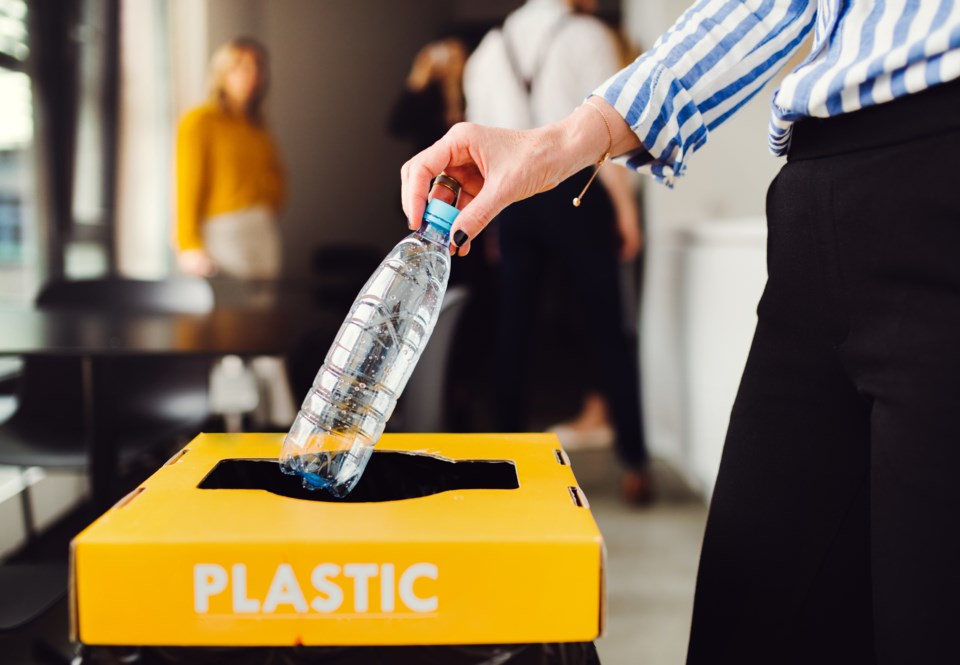As we take down our holiday decorations and get ready for the new year, we may find we have extra waste or duplicated, unused or unwanted items in our homes. What can we do with them and what can we do to avoid too much waste (or too much stuff) in the future?
Did you know that the order of the 3 Rs matter? It’s reduce, reuse and recycle for a reason! Reducing and reusing is key and recycling is actually considered a last resort. So let’s get creative and find ways to re-purpose the things we already have... let’s get RRR-olling!
POST-HOLIDAY CLEAN-UP
Holiday gift wrap
Keep any bows, ribbons, boxes, bags or tissue paper you might still be holding onto, this can all be reused next year. Keep your holiday cards too, they can be used to make gift tags or small gift boxes.
Gift wrap made of paper can be put in the Blue Box, but foil or plastic types cannot. Paper gift bags can be recycled, but remember to remove the plastic or rope handles first. Tissue paper belongs in the Green Cart.
Wooden orange crates
These aren’t recyclable, so try re-purposing them instead. Use them to help you get organized; they make great baskets or shelves, serving trays or bases for gift baskets.
Christmas trees
Put your natural Christmas tree out by the curb on your regularly scheduled garbage collection day. It can be made into rich compost to help grow new trees. Be sure to remove all decorations, tinsel, stands and wrap. Next year, you might want to consider decorating a live potted tree instead.
DONATE DUPLICATES, UNUSED OR UNWANTED ITEMS
A great New Year’s resolution would be to declutter your home and to donate any items that you won’t be using. There are several local second-hand stores listed on the City of Greater Sudbury’s website. You can also donate any unopened, non-perishable food that you don’t plan to eat to a local food bank. Donations are needed year-round.
Even if you have “scrap” material, fabric and textiles, you can donate them to organizations like Northern Initiative for Social Action (NISA). Their Warm Hearts/Warm Bodies (WH/WB) program uses material to create quilts, blankets and comforters for people in the community who are in need, such as the homeless, premature infants or those living in emergency shelters. This unique program reduces waste by re-using materials while at the same time providing a valuable service to the less fortunate.
REDUCE THE WASTE TO BEGIN WITH
Going forward, let’s think about how we can reduce the waste we create. We can do this by purchasing fewer physical objects, choosing items with less packaging when we do and buying gifts that are experiences or are consumable.
The folks at The Nickel Refillery are dedicated to producing zero waste and to helping others do the same. While they offer a diverse range of local, sustainable and often fully unpackaged products, you can also bring your own containers to use for their bulk items like dry, liquid, fridge and freezer foods, household cleaners or personal care products. Simply bring in any clean containers you have—they could be jars, shampoo bottles or yogurt containers—and fill them with an assortment of goods. Reducing waste involves questioning and rethinking how we purchase items, how we dispose of what we use and how we think of our everyday items.
AVOID SINGLE-USE PLASTICS AND OTHER PRODUCTS THAT CANNOT BE REUSED
One of the most important ways we can reduce our environment footprint is to avoid single-use plastics and any other products that can’t be reused. Plastic-free Greater Sudbury is a community campaign that is dedicated to reducing single-use plastics through collaborative, sustainable and socially inclusive efforts. This grassroots, not-for-profit group participates in Junction Creek clean-ups, partners with organizations on community projects and supports other zero-waste efforts throughout the city. Interested in learning more? Take the pledge.
RECYCLE IT: THE LAST RESORT
If you cannot reuse an item and were not able to reduce the waste, then find out if you can recycle it. If you’re ever not sure what to do with a particular item, simply enter the name of it into the City’s Waste Wise Tool.
FOOD WASTE
Let’s not forget all the food waste created by households. Compost any food waste your family creates and make a concerted effort—through careful menu planning and smart grocery buying—to buy only what you need.
GOALS FOR 2022
Why not make reducing waste one of your New Year’s resolutions? Start with a waste audit by looking at the contents of your trash at the end of the week and see what fills it. From there, you can begin to modify your habits.
Let’s all make a goal for 2022 to follow the tips above. This will go a long way towards helping the City achieve its net-zero goal of 90% solid waste diversion by 2050.
If you have a project you’d like the City to highlight, contact Jennifer Babin-Fenske at [email protected].
